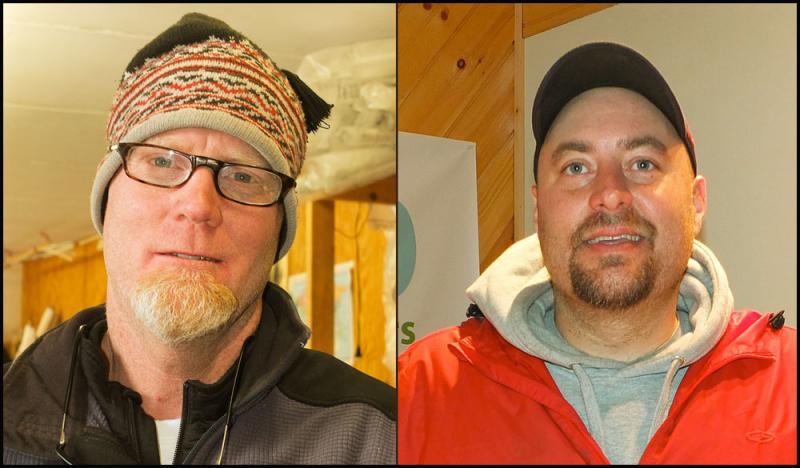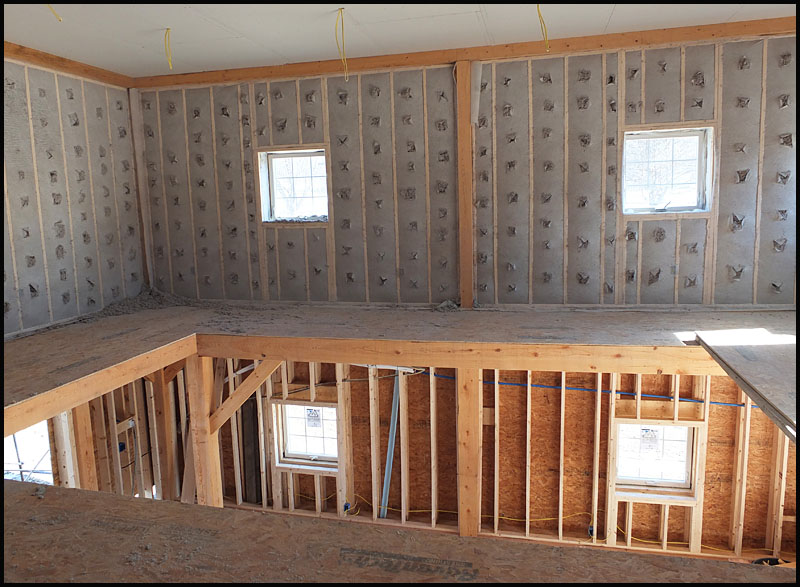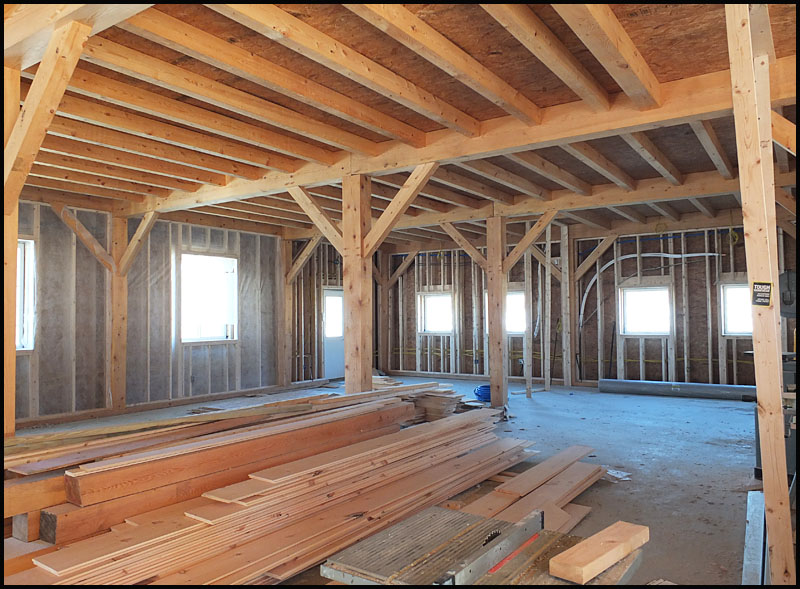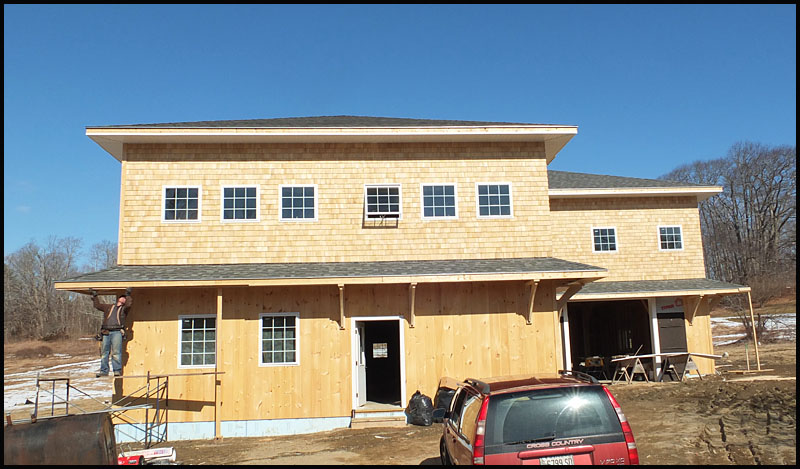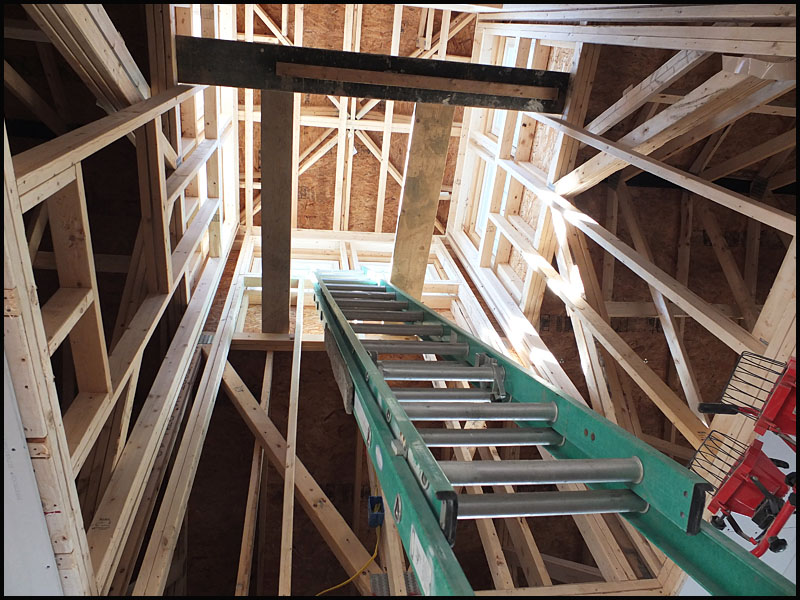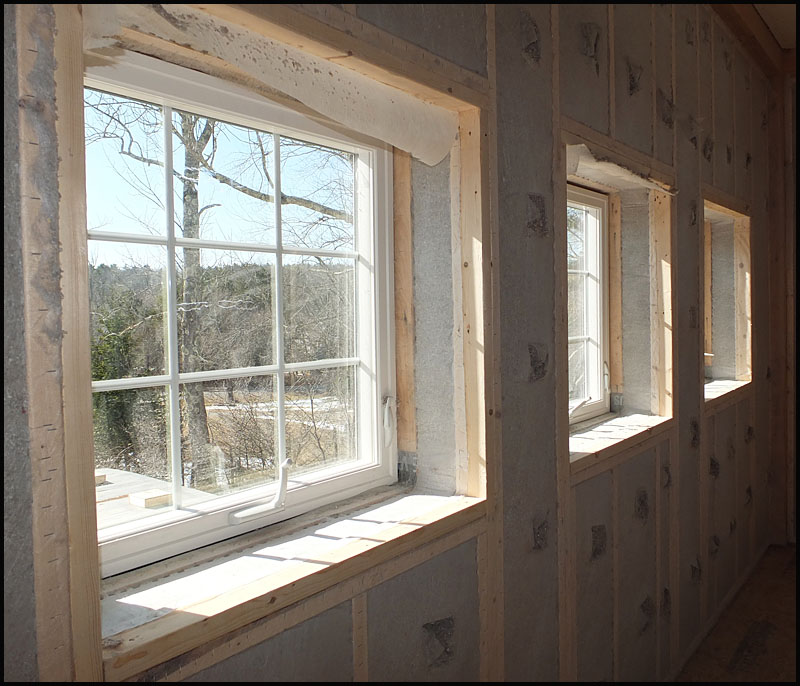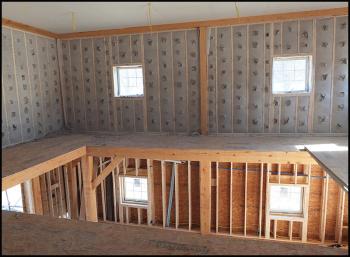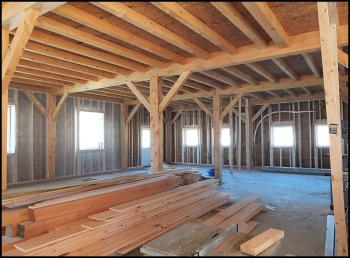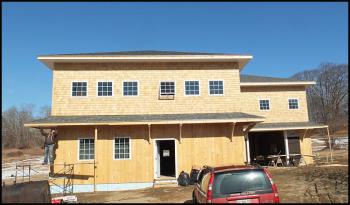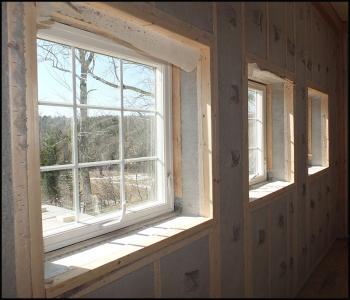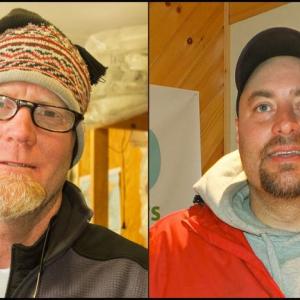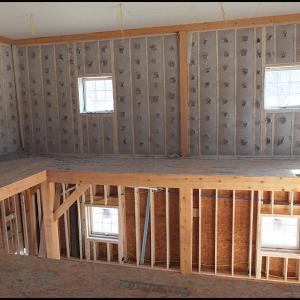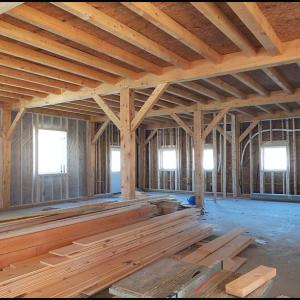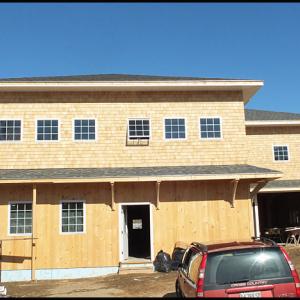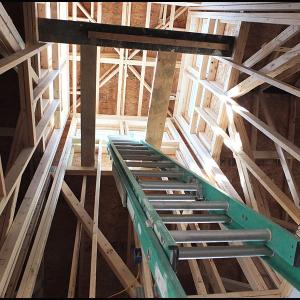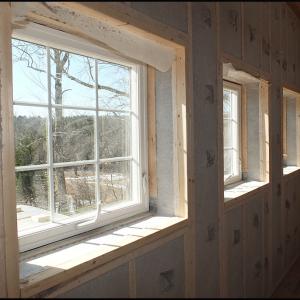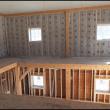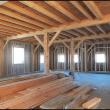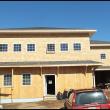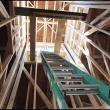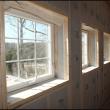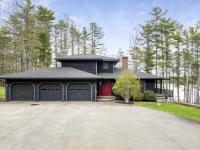Aurora Sails in Rockport showcases energy-efficient construction
ROCKPORT — Will Dennett of Aurora Sails wanted to relocate his business to a new facility and chose a parcel at Simonton Corner in Rockport on which to build. Then, he met Brennan Black, vice president of Black Brothers Builders, and started a conversation about net-zero housing. That hooked Dennett, and plans for his new building took off in a new direction.
“I thought it was a really cool idea,” he said. “It’s been all that so far and we’re really excited to have it working. The new facility will be close to 6,000 square feet. Our current location is less than 4,800 square feet in size, but we’re in four different areas. It certainly is hard to work like that laying out sails. Even though our new space is not overly large by any means, it will meet our needs well.”
Dennett said the new building should be finished by June. They been in their present location on Molyneaux Road for 17 years.
“Aurora Sails manufactures new sails for boats,” said Dennett. “We manufacture all varieties of covers, custom tops and enclosures for all boats, sail and power. Our cushion department is a large component of what we do. We’re coming up on our 18th year here and we’ve been very lucky to work with some of the larger boat yards. With the new space we can take on larger projects, projects that require more floor space and more horsepower in the machines, and of course more storage space.”
Black said Dennett originally was scouting for solar panels with one of BBB sister companies. Elizabeth Black explained the concepts of net-zero housing and Dennett got interested.
Net-zero is high-performance construction, said Black. Net-zero houses generally require between 80 to 90 percent less energy for heating and cooling. The super sealed envelope is combined with high performance mechanical systems. BBB then installs a simple solar array on the roof to cover any demand.
“Aurora Sails will have an array on the south facing roof,” Black said. “It will be about 240 volts, but kilowatts are how they track it and it will be around 10 kilowatts. That will do all his heat, air conditioning, hot water and domestic electric.”
The system relies on a double wall system to make it work.
“We have an interior stud wall that the dry wall and the finish trim gets hung to,” he said. “There is a four-inch void and then an exterior, which we call the curtain wall, where the windows and siding get hung on. There is no piece of wood that touches the inside environment and the outside environment at the same time. We eliminate thermal bridging that way. We put a mesh on the outside wall and a thick layer of cellulose insulation is blown in and packed. The mechanical room for everything is generally the size of a coat closet.”
Black Brothers built its first net-zero house on Spruce Head Island eight years ago.
“Once we started getting performance data from that house and saw that it was doing what it was really supposed to do, we made a shift right then and said we’re going to start doing this,’ he said. “We are using essentially the same amount of materials, but it takes more time. Once you add the extra time and the boiler room and everything in it of days past, you’re within about 10 percent difference of standard construction to net-zero. It costs about $6,000 a year in utilities to run a conventional house, so that 10 percent gets paid back within a three- to five-year period.”
The term net-zero derives from the practice of power companies installing net meters on houses to track how much net energy a household uses as compared to how much power in put back on the grid.
In the summer, with full sun, a house equipped to produce power can generate more electricity then it uses. In the winter, it uses more power than it generates. At the end of a 12-month period, the utility company will tabulate how much is used against how much is generated. If everything has been done properly, that net difference will be zero, which is where the terminology comes from.
Black Brothers Builders has been around for 15 years, but only in the last eight has the company focused on net-zero building.
“We have four years of projects on the books, all new construction in net-zero,” he said. “Everything we’ve done for the last two years has been 100 percent net-zero.”
PBP: Can someone take an existing house and turn it into net-zero housing?
“That is the million dollar question,” Black said, laughing. “Usually the costs associated with it and the payback period is not within anyone’s lifetime. If someone is planning a renovation and want to work the net-zero philosophy into it, it’s a good time, but if you want to just take a house and turn it into net-zero it’s extremely hard and expensive. The payback would be 30 years-plus.”
Solar Maine, at 1126 Commercial Street in Rockport, is a sister company of Black Brothers Builders. It supplies all the mechanical equipment to the construction company and is open to the general public.
“One of the feedbacks we get is that you can’t tell when it’s cold out, but you can’t tell when it’s warm out, either,” said Brennan. “If it’s loud out you can’t hear it, which is one of the benefits of a thermal break. If you live by a busy road, it’s just like a library inside. You can’t hear anything.”
PBP: How do you circulate the air in one of these houses to keep it fresh?
“Heat pumps,” said Brennan. “Air quality in this type of housing has been shown to be seven times healthier then air quality in a normal home. The heat pumps are a closed loop system. They filter the air before its circulated back into the house. Even when the air is mixed with outside air before it’s filtered you can expect to get 80 percent of your heat back before it’s put back into the house. More fresh air exchange, but we’re not sucking in cold air to do it. I can’t say people who live in these house have less cold or allergies, but I can say that they suffer less mortgage default. You fix the costs of your utilities, so there are no surprises when the oil company decides to double the cost of a barrel. It doesn’t affect our customers at all.”
Brennan said there is a delivery fee associated with the electric company and that the power company is currently trying to get that raised. For a little more money you can have a battery system involved and be totally off the grid, so what the power company does will not affect you.”
Event Date
Address
United States

